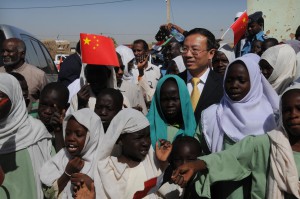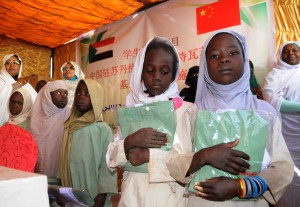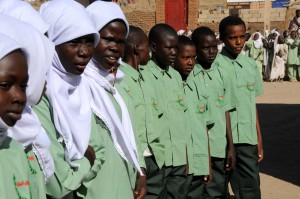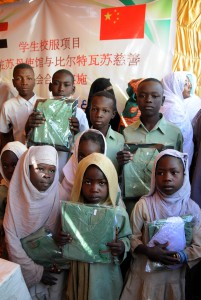BEIJING, Jan. 2 (Xinhua) — One week before New Year, light came to 39,800 people in remote northwest China, the last group being able to light their homes in the world’s most populous country.
At the end of 2015, China met its goal of providing electricity to all its people, set out in the 12th five-year plan (2011-2015).
Universal power access was one of the goals China fulfilled in the past five years, ranging from railway construction to pollution control, from economic growth to resident income, and to poverty reduction.
Those achievements mark a satisfying end of the five-year plan and lay a solid foundation for the whole nation to march toward realizing its first centenary goal in the coming five years, analysts say.
The goal, one of “two centenary goals” put forward by the ruling Communist Party of China in 2012, is to double the 2010 GDP and per capita income of urban and rural residents and to complete the building of a moderately prosperous society by 2020.
On Wednesday, a new 345-km stretch of high-speed railway in the southernmost province of Hainan began operation, making it the world’s first of such railway to circle an island.
With Hainan’s high-speed loop line, China’s length of operating railways exceeded 120,000 km, including 19,000 km high-speed rail, both the longest in the world.
The economically advantaged Jiangsu Province in east China is also speeding up railway construction in its northern part to connect all its major cities with high-speed railways.
Over the past five years, China saw an annual average economic growth of 7.8 percent, and its per-capita GDP is expected to increase to approximately 8,000 U.S. dollars from 4,516 U.S. dollars.
The number of newly employed reached about 64 million and the rural poverty-stricken population fell from 166 million to about 60 million.
China also achieved reduction targets outlined in the 12th five-year plan for four major pollutants — sulfur dioxide and chemical oxygen demand, ammonia nitrogen and nitrogen oxide, six months ahead of schedule, official statistics showed.
“Fulfilling major economic targets of 2015 will mark the smooth completion of the 12th five-year plan and allow the country to develop on a higher platform,” said a statement issued after the Central Economic Work Conference on Dec. 21.
Hu Angang, director of the center for China studies at Tsinghua University in Beijing, gave a “high score” for the implementation of the 12th five-year plan.
“The completion of the 12th five-year plan is a vital step toward completing the building of a moderately prosperous society and consolidating a basis for the country’s modernization and national rejuvenation,” he said.
He attributed the plan to better ruling by the CPC and the remarkable progress in the country’s governance system.
Because 2016 is the first year of the 13th five-year plan period it is important for China, as a good start is half the battle.
China needs to face up to the challenges ahead in achieving an average annual growth of no less than 6.5 percent over the next five years while cutting excessive capacity, treating pollution and reducing poverty.
In his New Year speech, President Xi Jinping called for confidence and hard work for a good beginning in the home stretch of building a moderately prosperous society in all respects. He urged joint efforts to lift tens of millions of rural people out of poverty.
The country’s amended law on air pollution control took effect on Friday, dealing tougher punishments to industries and seeking to curb air pollution at its root.
According to Environment Minister Chen Jining, some major pollutants must be cut by another 30 to 50 percent for remarkable improvement of environment.
On Wednesday, the country unveiled an environmental protection plan for the most polluted region, which includes Beijing, Tianjin and Hebei. Bouts of heavy smog choked the region several times this winter.
Under the guideline, in 2020, the region should realize a significant reduction of major pollutants and a 40 percent fall of the density of PM2.5 (particulate matter smaller than 2.5 micrometers) from 2013. Enditem





